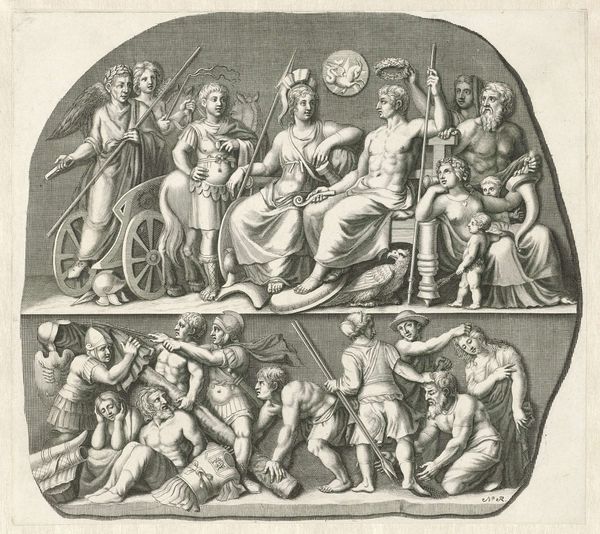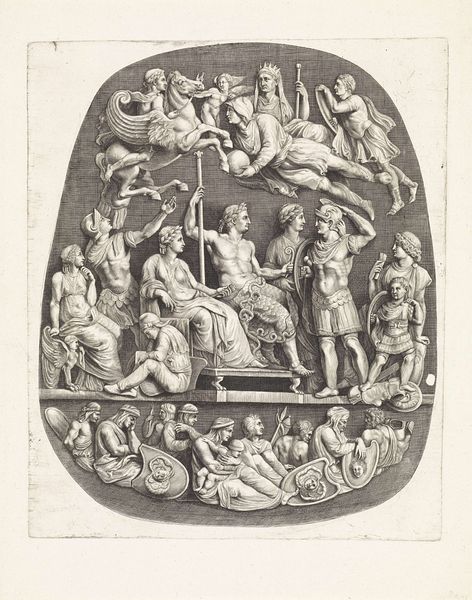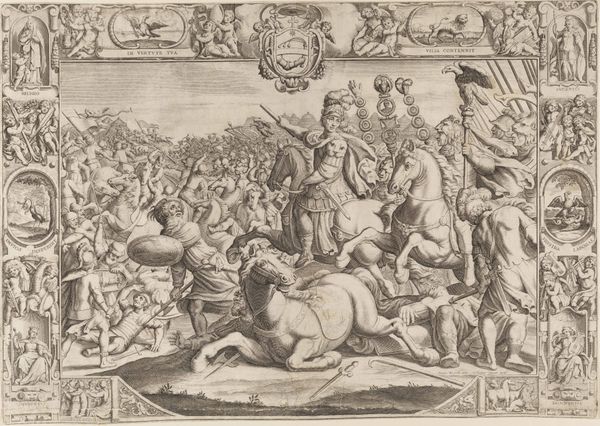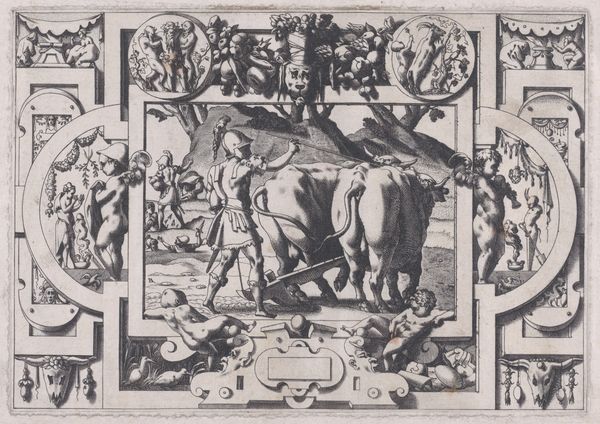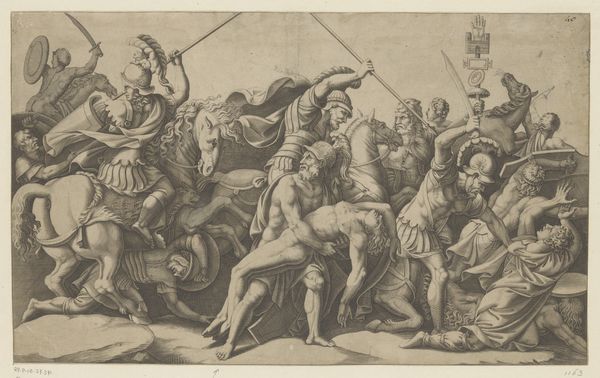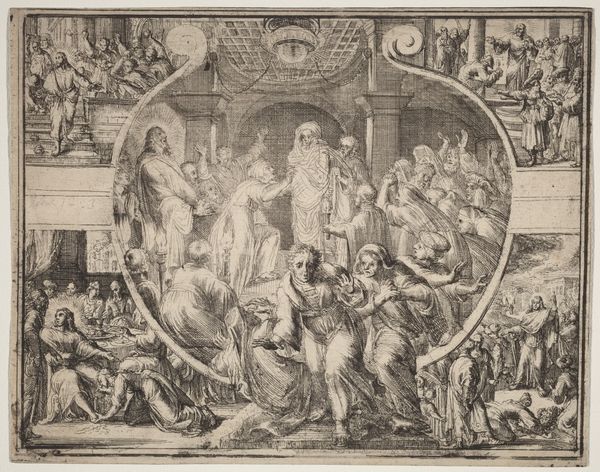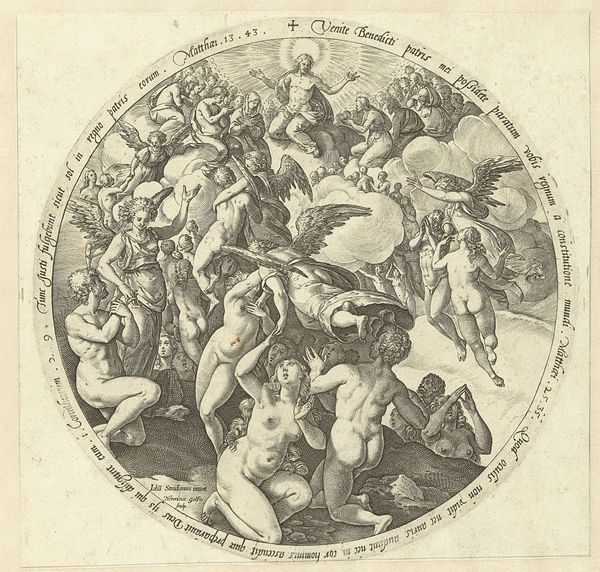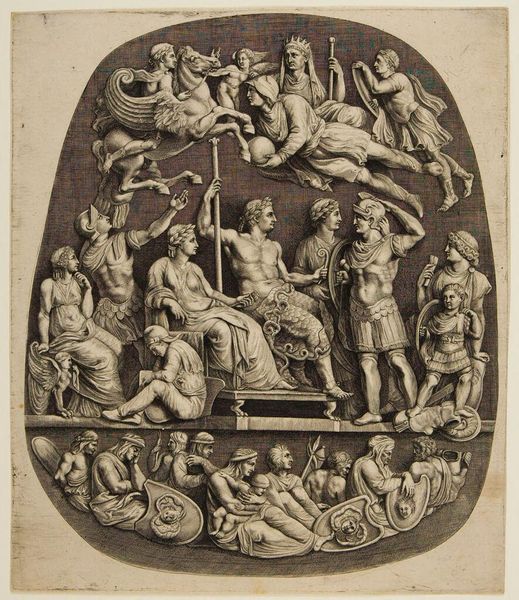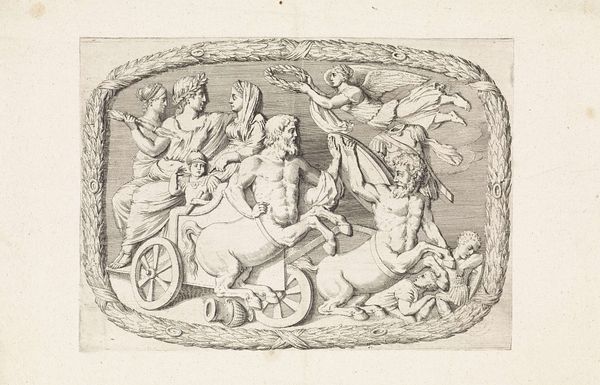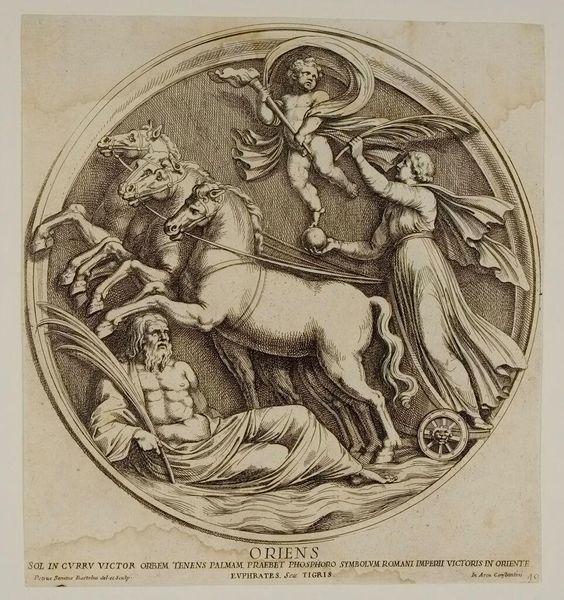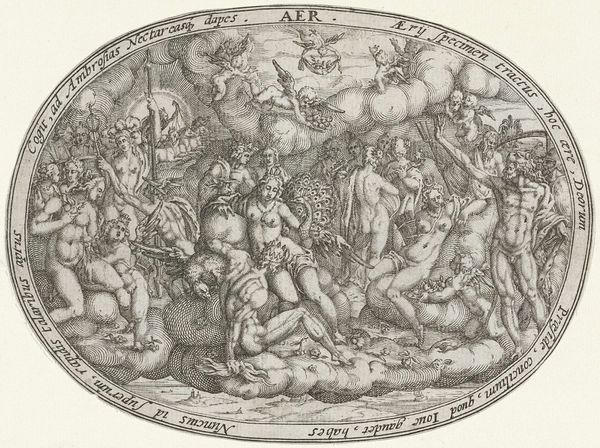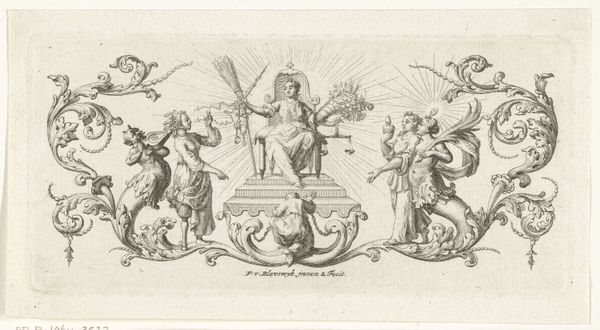
engraving
#
allegory
#
baroque
#
old engraving style
#
classical-realism
#
figuration
#
line
#
history-painting
#
engraving
Dimensions: height 177 mm, width 224 mm
Copyright: Rijks Museum: Open Domain
Curator: Wow, there's a lot happening here! It's like a celestial traffic jam, all swirling lines and dramatic gestures. Is it just me, or is there a touch of organized chaos? Editor: Indeed. This is Lucas Vorsterman I’s “Allegorische triomf van keizer Licinius,” dating back to 1622. As you can tell by its Baroque style and presented today in the Rijksmuseum, this engraving certainly captures an intense and symbolic scene. Curator: “Triumph” is right! You have an Emperor being carried triumphantly while humans get crushed underfoot. What statement about power dynamics do you believe it's trying to capture? Editor: Well, Licinius was a Roman Emperor known for his persecution of Christians. This image, created well after his reign, engages in a longer debate about the nature of imperial power, how power corrupts, and the human cost of conquest. The trampled figures represent subjugated peoples, a visual testament to the empire-building through violence and exploitation that underpinned the Emperor's power. Curator: The level of detail is mind-blowing, from the muscles straining in those horses to the anguish etched on the faces of the fallen. And everything seems so precisely ordered, yet it feels overwhelmingly chaotic and brutal at the same time. What's the point? Is the Artist endorsing what’s happening, or denouncing it? Editor: Ah, therein lies the rub! Baroque art often employs dynamism and theatricality to evoke strong emotional responses. Here, it invites us to grapple with uncomfortable truths about the violence inherent in the structure of Roman power itself. By presenting such a spectacle, the work encourages viewers to contemplate the consequences and legacies of such reigns. Curator: This certainly does invite contemplation. The whole scene becomes this elaborate dance between order and chaos. All of that linear energy bottled inside the rigid oval makes you focus on its message more intently. A very dark and complicated message indeed. Editor: Precisely, and it's those visual tensions that make it such a compelling artifact for interrogating themes of power, morality, and representation itself. We must learn to see images, such as the work before us, not just as aesthetic statements but as a crucial component of social commentary. Curator: I guess the biggest victories always come at someone else’s expense. This image won't let us forget it, will it? Editor: No, it demands that we remember.
Comments
No comments
Be the first to comment and join the conversation on the ultimate creative platform.
